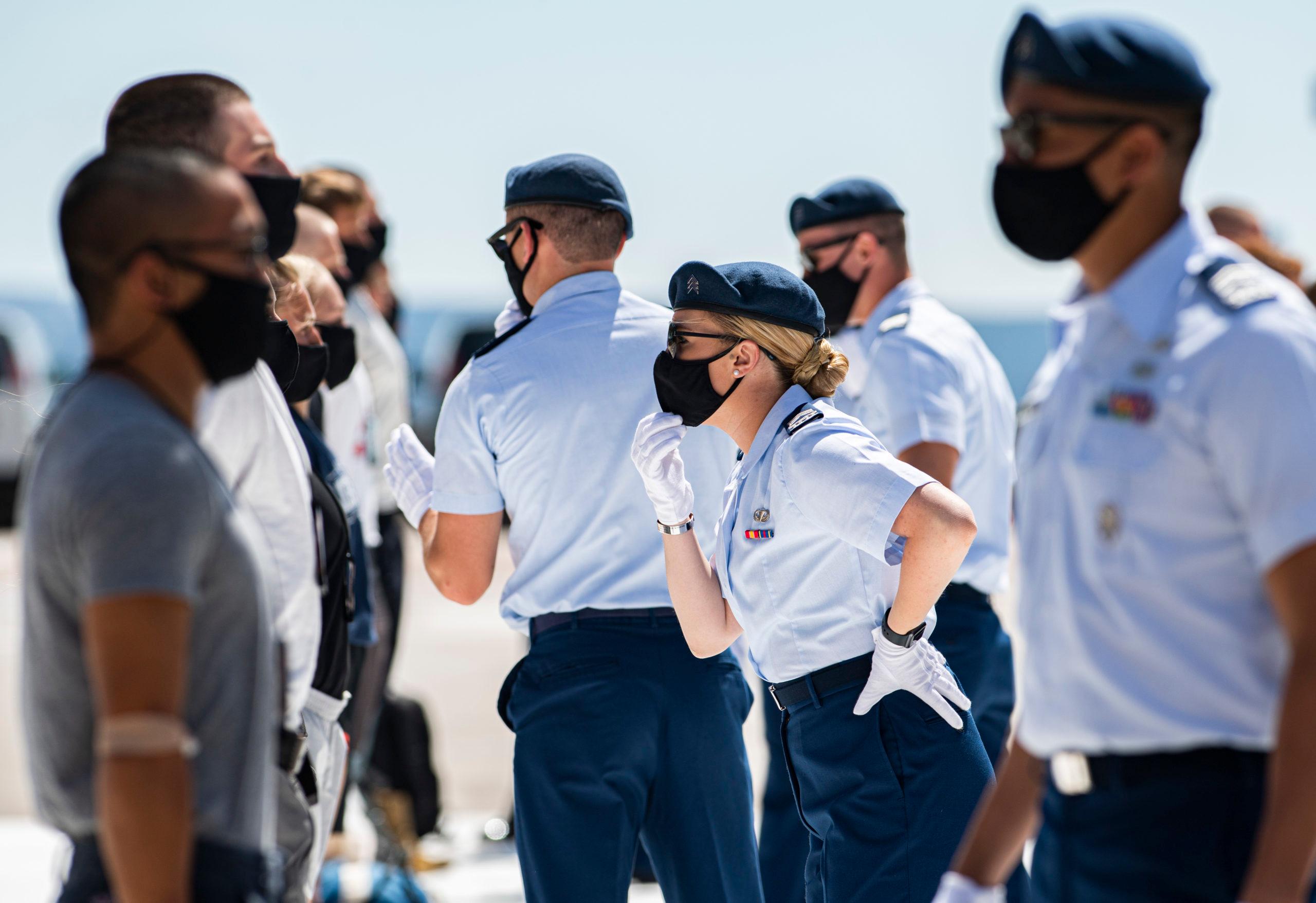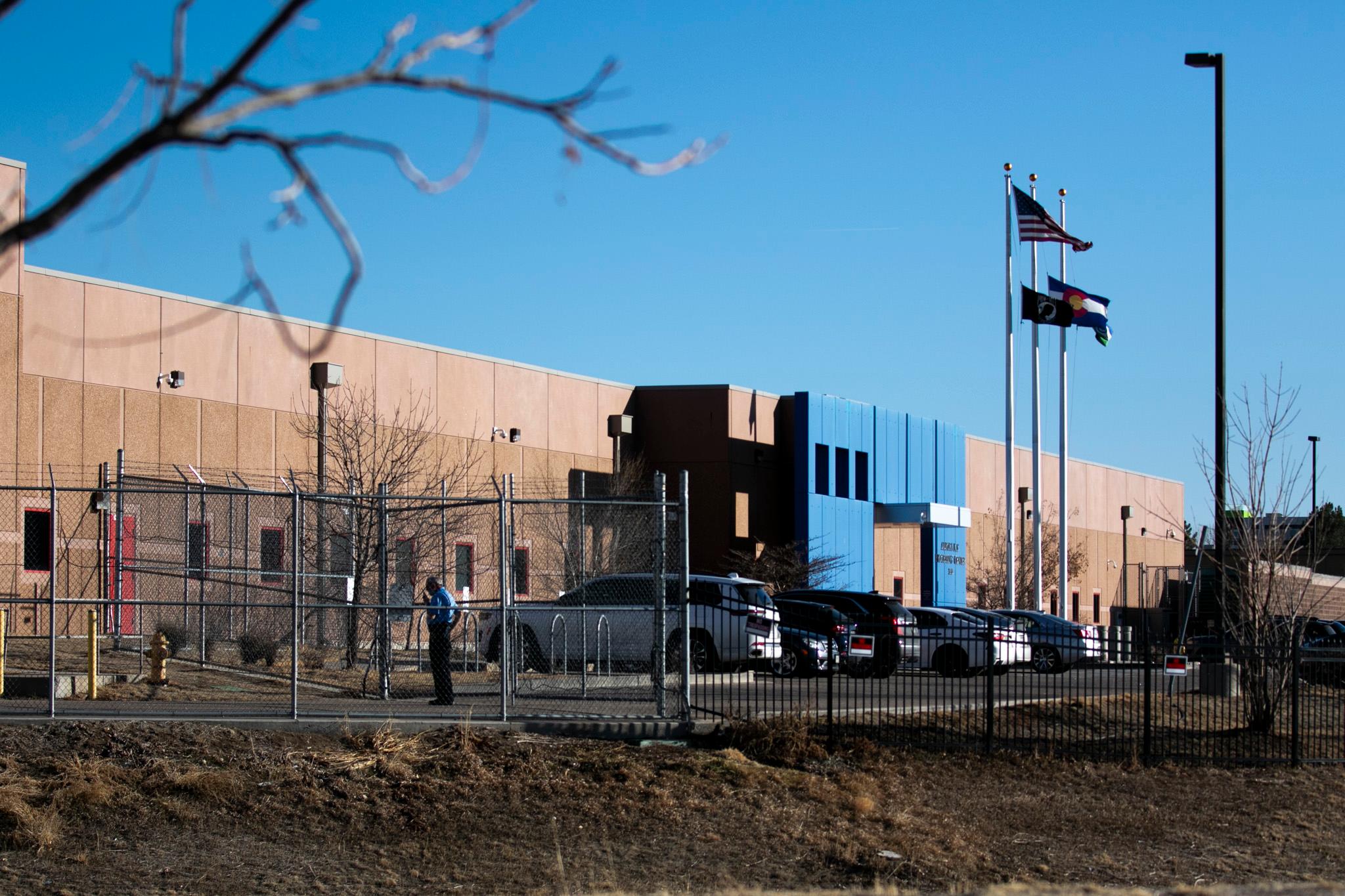
A recent analysis found members of Congress are more likely to nominate white students than students of color to attend the nation’s elite military academies. That raises questions about how to make the 200-year-old congressional nomination system more equitable.
Nominations are required by law for students who want to study at the U.S. Military Academy West Point, the Naval Academy, the Air Force Academy, or the Merchant Marine Academy. If a student can secure a nomination and meet the academies’ strict standards for admission, it means a free education in exchange for five years of service.
The Connecticut Veterans Legal Center analyzed more two decades of congressional nominations. The results were “stark,” said Liam Brennan, the center’s executive director.
“Young Black Americans make up about 15% of the young adult population, but Black students only received 6% of current members’ nominations at the military service academies,” Brennan said. “That's a great big differential.”
Brennan found similar disparities for Latinos: 8% get nominations even though they make up about 22% of young adults.
“We expected to see discrepancies,” Brennan said. “The extent of the discrepancies were surprising.”
Brennan said some of those discrepancies have to do with demographics. If a lawmaker’s constituency is overwhelmingly white, that could lead to more white nominees. But Brennan and others who've studied the issue said there are more reasons: a lack of equity in public education and the amount of effort that members of Congress invest in finding diverse nominees.
The Black Veterans Project’s Daniele Anderson graduated from the Naval Academy in 2013, but said few Black teenagers are even aware that's an option. She remembers hearing about it through her junior ROTC program.
“I had this new commander who said, ‘You're smart and talented, and I think that you'd be a great candidate for a service academy,’ and I said, ‘What is a service academy?’”
Anderson said even students of color who do know about the academies might not feel they’d be welcome or successful there due to racism.
“You have microaggressions, sometimes macroaggressions, and this continues throughout your tenure — throughout your career — and you're still expected to perform at the highest levels of anyone your age,” Anderson said.
Rep. Anthony Brown, a Maryland Democrat, said there’s a lack of qualified students of color who ask him for a nomination.
“I have an underrepresented applicant pool,” Brown said of the roughly 60 to 70 applications for nominations he receives each year. “African American and Latino students are not applying at the same levels that I want them to apply.”
The report found just 38% of Brown’s nominations went to applicants of color in his majority-minority district, where awareness of the service academies is probably higher because it’s so close to the Naval Academy in Annapolis.
“We're doing our hardest to squeeze the very best out of the small pool, and we actually overperform when it comes to appointments,” Brown said.
Go Out And Find Them
Some lawmakers said the key to nominating more diverse applicants is to go out and find them.
“Students sometimes need to be told, ‘The pathway to college is open to you,’ and that's true for the service academies as well,” said Heather Wilson, a former Air Force Secretary and former Republican Congresswoman from New Mexico. She’s now president of the University of Texas at El Paso.
Wilson has nominated hundreds of students to the academies. She said the process is complicated, and some lawmakers and their staffs need to put more effort into it.
“For some people, it's just not a high enough priority to spend time training members of Congress on how to do this,” Wilson said. “If I were to do one thing, it would be to focus on outreach and training the local office of members of Congress.”
Rep. Elaine Luria, a Virginia Democrat, credits outreach for boosting her nominees of color from 20% during her first year in office to 40% in her second year.
“That was a significant uptick, because we really, really made an effort to reach as many people as possible,” said Luria, a Naval Academy graduate herself who now represents the district next door.
For Luria, outreach involves multiple events throughout the year at schools, with educators, and with community groups.
“The Boy Scouts, the Girl Scouts — just all types of groups to make sure that young people are aware this opportunity exists,” Luria said.
Both Luria and Wilson defended the congressional nomination system. They said it helps ensure the military’s future leaders come from all over the country.
“As the size of the military has gone down, there are communities and regions of the country that have very little connection to the military at all,” Wilson said. “And the nomination process helps fight against that by geographic dispersion of nominations.”
The Connecticut Veterans Legal Center’s analysis laid out multiple recommendations to increase racial equity in the congressional nomination system.
“It’s a two-pronged assessment,” Brennan said. “There needs to be action on the part of Congresspeople to do better. But then there also needs to be a serious assessment of what the system is like and how the system can be made more equitable to allow better access.”
The report calls on Congress to appropriate funding for members to increase their outreach to underrepresented students. It also proposes a task force to study expanding the pathways to the academies for candidates who don’t get nominations from their members of Congress. (One of the five federal academies - The U.S. Coast Guard Academy - already does not require a congressional nomination.)
Rep. Brown helped pass a new law that aims to standardize and streamline the way congressional offices collect demographic data on their nominees and make the entire process more transparent. But there are no plans to change the nomination system, which has been law since 1802 when President Thomas Jefferson established the Military Academy at West Point.
This story was produced by the American Homefront Project, a public media collaboration that reports on American military life and veterans. Funding comes from the Corporation for Public Broadcasting.









